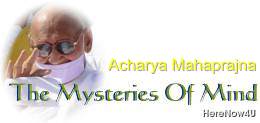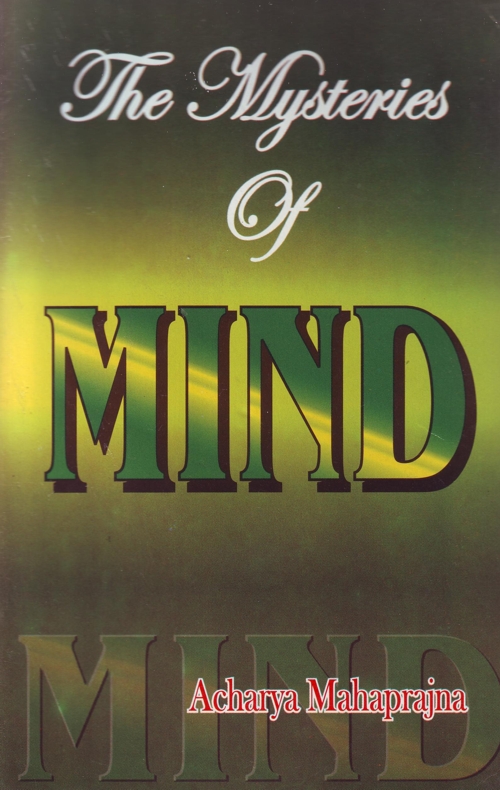
The Acaryas of Yoga have, however, found a method of con trolling the mind. Breath is the means of controlling the fickleness of the mind. By controlling breath, you can control the mind. That is why we have taken breath as the basis of our exercises.
Breath travels outside the body as well as inside it. It is like a lamp, which illumines the somatic as well as extra spastic atmosphere in the midst of which man lives. To use a metaphor, let us place the mind on the chariot of breath so that it may enter into the body. In other words let us become introverts. That is the essence of spirituality. The mind has got to be yoked to breath. That is the first step of energising ourselves.
Now let us consider the question of energising the body. In order to answer this question let us understand the nature of energy. Every object of the world, whether small or big, contains energy. There is no substance, which does not possess energy, and a thing, which does not possess energy, cannot be called a substance.
Philosophers have discussed the nature of sat (that which exists) and asat (that which does not exist). Asat is that which has no activity. Sat is that which has activity. There are two terms, vrksa-kusuma (a flower on the tree) and akasa kusuma (a flower in the sky). The first is a real object while the second is a thing of imagination. The flower on the tree is real because it has activity whereas the flower in the sky is unreal because it has no activity. An inactive object has no energy whereas the active one has. Energy is the characteristic of sat. Is energy the characteristic of liv ing beings also? That which has energy as well as consciousness is called a living being. Atoms have energy but they do not posses consciousness. The soul has both energy and consciousness. Hu man beings combine in themselves both. We have feeling also and that is the consequence of consciousness. We have experiences and feeling and also energy. An atom has so much energy that, if it is split, it can burn the entire universe into ashes. The soul also has infinite energy. It has an infinitely larger concentration of energy than what the atomic particle contains. Consciousness is also infinite. The human being has a combination of both in him. Man who possesses such a fantastic store of energy can work wonder, not to speak of leading a truly religious life or of controlling the mind, which are the preliminaries of sadhana. Our sadhana does not aim at controlling or arresting the mind but with doing away with the mind completely or with rendering the mind completely empty.
Living beings are divided into two categories: those who have mind and those who do not have. The former have cognitive activity whereas the latter do not. The human being has a mind and cognises. He has a highly developed mind. However, sometimes he enters into a state in which there is neither cognition nor non-cognition. He relinquishes his mind. His mind ceases to function. In such a state what remains in him is consciousness. This state is the consequence of an explosion of energy or we may say that is an achievement due to energy.
The development of energy depends on the effort we put in. Every kind of sadhana aims at the development of energy and the expansion of consciousness in the practitioner. Dormant energy does not produce any effect. So far as a poisonous snake lies peacefully, no body is afraid of it. But once it has become aroused and enraged, the entire atmosphere becomes surcharged with fear. When fire breaks out, it makes everyone terrified. Dormant energy is like extinguished fire. Once it is activated by the practitioner, he begins to shine like burning fire and begins to live a special kind of life. Our only aim is to arouse the dormant powers of the practitioners. The activating of energy gives us extraordinary experiences. If there is any potential disease in the practitioner, it becomes manifest due to the arousing of his energy and meditation. It is very difficult to control energy once it has been aroused.
A practitioner once came to meet me. He told me that he had read some of the literature written by me and that he was doing recitational meditation as well as other meditations intensely. He had, however, certain difficulties in the course of his exercises. He would become restless and feel as if he had gone mad. No doubt he felt a great joy in meditation and it was difficult to give it up. What worried him was that when his energy became aroused, he found it difficult to control it. He would sometimes go mad. He was correct. Let us discuss his difficulty in three stages.
The first stage is the activation of energy. In under- taking this task the practitioner should seek the guidance of some expert, otherwise the consequences may be dangerous. Only an expert can take care of the practitioner in a critical situation.
The second stage consists in controlling aroused energy. What is needed is to change the exercise in such a way that it becomes congenial to the practitioner.
The third stage consists in the use to which the aroused energy is put. The aroused energy produces several consequences. Sometimes the achievements lead the practitioner astray. He becomes enamoured of the miracles of sadhana and forgets his aim. Sometimes he becomes ambivalent because of his strange experiences and loses inspiration and enthusiasm. People often ask the practitioners about the miracles they had seen during their exercises. I would like to warn you that there is nothing like a miracle. To speak of miracles is a complete fraud. Whatever happens during sadhana happens according to the laws of nature. Those who are ignorant of the workings of nature attribute such happenings to mysterious powers, which are supposed to produce miracles. As a matter of fact whatever happens during sadhana happens in a natural way and according to the laws of nature. Acharya Mahaprajna
Acharya Mahaprajna

